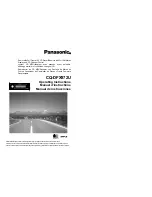
XII.
ABOUT THE ALGORITHMS
When building pro
fi
les for BRIC-Link II and remote devices, there are several di
ff
erent audio encoder op ons to use
for each direc on of the link. Di
ff
erent audio encoder op ons each have advantages and disadvantages depending
on the situa on. The following is a brief descrip on of the available audio codec algorithms to assist in making the
best choice.
AAC
This algorithm is a highly regarded standard for compressing audio to cri cal listening standards. It has been
judged to produce “near transparent” audio at a coding rate of 128 kb/s stereo. The standard is a collabora ve of
several audio companies’ best e
ff
orts, and has become popular as the default audio codec of the
Apple™ iTunes™
program
. AAC should be considered the highest quality codec in BRIC-Link II. Enhancements like HE-AAC a empt to
maintain a similar quality with reduced bandwidth and delay.
HE AAC
This is a newer version of AAC designed for increased e
ffi
ciency. The goal of this algorithm is to produce AAC-
comparable quality at a lower bit rate. It does this by encoding lower frequencies to AAC, and higher frequencies
using Spectral Band Replica on (SBR). SBR is a technique that par ally synthesizes these high frequencies. HE-AAC
is trademarked by other companies as AACPlus™. HE-AAC (and close deriva ves) is o en used as the main audio
codec for digital radio and satellite networks.
HE AACV2
This algorithm further increases the e
ffi
ciency of HE-AAC by adding intensity stereo coding. This results in a lower
bit rate for stereo signals. Reduced rate HE-AAC mono is grouped into this category, although it does not contain v2
coding.
LINEAR PCM*
This encoder does not compress audio at all. It uses a 48 kHz sampling rate (using analog inputs or 48 kHz AES3)
and applies small frames of linear audio to IP packets. This mode is only useful on high bandwidth LAN or managed
WAN environments. Mono Mode requires a network capacity of 804 kb/s while Stereo (Dual Mono) Mode requires
a network bandwidth over 1.56 Mb/s.
In Linear PCM, if the input AES3 sampling rate is 32 kHz or 44.1 kHz, the network stream will also run at this rate
and the required bandwidth will be lower.
Summary of Contents for BRIC-Link II
Page 1: ...Product Manual ...
Page 2: ...BRIC Link II June 2021 ...
Page 3: ... ...
Page 4: ... ...
Page 5: ... ...
Page 6: ... ...
Page 7: ... ...
Page 8: ... ...
















































